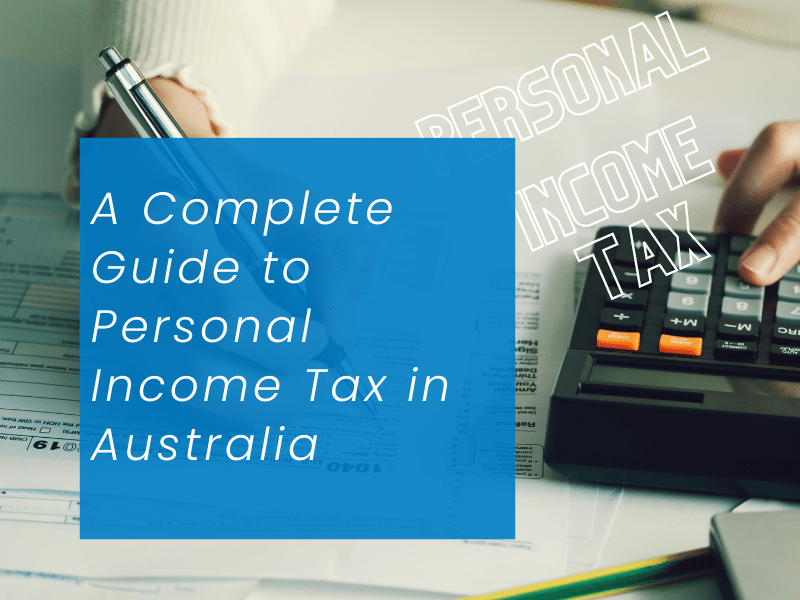A Complete Guide to Personal Income Tax in Australia: Maximizing Your Tax Return
It’s that time of year again when Australians start thinking about their personal income tax returns. For some, it can be a daunting and confusing process, but fear not, because this complete guide to personal income tax in Australia will help you maximize your tax return. Whether you’re a self-employed freelancer or a full-time employee, this guide will walk you through the essential steps to ensure you’re claiming all your eligible deductions, minimizing your taxable income, and ultimately getting the most out of your tax return. From understanding the different tax brackets and rates to knowing what expenses you can claim, we’ve got you covered. So, grab a cup of coffee, sit back, and let’s dive into the world of personal income tax in Australia.
Taxable Income and Deductions
One of the fundamental concepts of personal income tax is taxable income. It is the amount of income you receive that is subject to taxation. The Australian Taxation Office (ATO) defines taxable income as the difference between your assessable income and deductions. Assessable income includes any income you receive from employment, investments, or other sources. Deductions, on the other hand, are expenses that you can claim to reduce your taxable income.
To maximize your tax return, it is essential that you understand the various deductions that you are eligible to claim from the ATO. They allow deductions for work-related expenses, self-education expenses and charitable donations; work-related expenses could include uniforms, tools and equipment while self-education expenses include classes, textbooks and study materials for self-education expenses. Finally, registered charity donations can also be claimed as deductions.
Note that not all expenses can be claimed as tax deductions. Personal expenses like rent, groceries and clothing cannot be claimed as deductions. Furthermore, expenses reimbursed by your employer cannot be claimed as deductions either.
Understanding Tax Brackets and Rates
Once you’ve identified your taxable income and deductions, the next step should be understanding tax brackets and rates. Australia uses a progressive system where more you earn means higher tax rates will apply – with four tax brackets each having their own individual rate of taxation. between $45,001 and $120,000 per year and has a tax rate of 32.5%. Finally, the fourth tax bracket applies to individuals earning over $120,000 per year and has a tax rate of 45%.
Note that these tax rates apply only to your taxable income – that is, what remains after subtracting all eligible expenses and deductions have been claimed – not your total yearly earnings. By taking full advantage of deductions that qualify under IRS guidelines and claiming them all as necessary, your taxable income and consequently tax bill can decrease significantly.
Tax Offsets and Rebates
Beyond tax brackets and rates, there are also tax offsets and rebates that can help lower your bill. A tax offset reduces the amount you owe dollar-for-dollar; on the other hand, rebates provide payments directly from government.
Tax offsets and rebates, such as the low-income tax offset, senior Australians and pensioners tax offset, and private health insurance rebate, can significantly lower your tax bill and boost your return.
Filing Requirements and Deadlines
After you have filed your tax return, the Australian Tax Office (ATO) requires it be sent in. Depending on your individual circumstances, different filing requirements and deadlines apply – for example if you’re an employee, their employer should usually provide you with a payment summary detailing income earned and taxes withheld over time so this information can be used when filling out your tax return.
Maximizing Tax Deductions and Credits
In order to maximize your tax return, it is vitally important that all eligible deductions and tax credits are claimed. Some may go unclaimed; therefore it’s wise to review expenses carefully and seek professional guidance as necessary.
Common Mistakes to Avoid When Filing Taxes
As part of filing your tax return, it’s crucial to avoid common errors that could result in penalties or delays. Some of the most frequent blunders include failing to include income from all sources, claiming ineligible deductions and failing to keep accurate records.
To avoid making these errors, it’s essential to carefully review your tax return and seek professional guidance if needed. Luckily, the ATO offers useful resources and guidance online to assist individuals in filing their taxes correctly.
Tax Planning Strategies for the Future
Maximizing Your Tax Return Optimizing your tax return doesn’t stop with filing your taxes correctly; it also includes planning ahead. There are numerous tax planning strategies you can utilize in order to lower your tax bill and boost future returns.
Make voluntary contributions to your superannuation fund, which can reduce taxable income while providing long-term financial advantages. Also consider investing in assets with tax advantages, such as property or shares.
Taxation of Investment Income
When it comes to investment income such as dividends or rental rent, it is important that you understand how it is taxed. Investment income typically is subject to your marginal tax rate; meaning the more money you make, the higher your tax bill will be.
There are certain tax rules and deductions that apply specifically to various forms of investment income. For instance, if you own rental properties you can claim deductions for expenses such as interest on mortgage loans, repairs, and maintenance.
Working With a Tax Professional
While you could file your own taxes, hiring a professional to file them on your behalf could make the filing process smoother and avoid costly errors. A professional can advise you about eligible deductions and credits, assist in future planning efforts, and ensure your return is filed correctly and on time.
Final Note
Filing a personal income tax return in Australia can be an intimidating and complex process, but by understanding different tax brackets and rates, claiming all your eligible deductions and credits, and planning ahead, you can maximize your tax return while lowering your bill. Be sure to maintain accurate records, review your return carefully, and seek assistance from a tax professional if needed – following these tips will ensure you maximize your tax refund and keep more money in your wallet!









